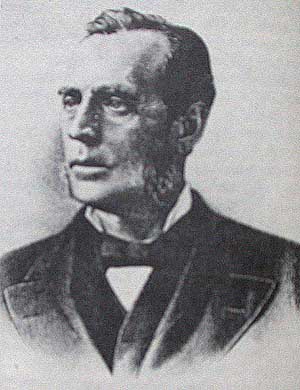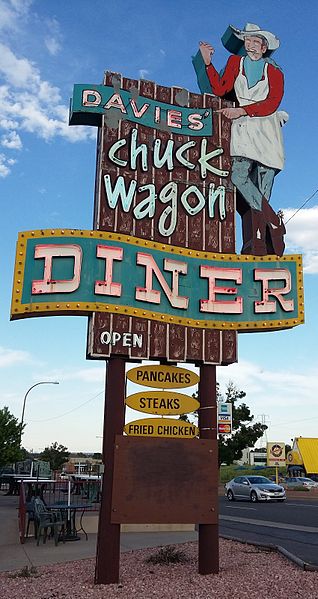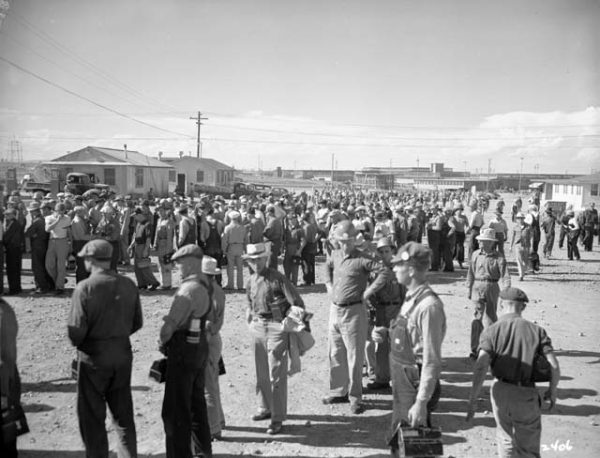This year marks the 50th anniversary of Lakewood’s incorporation as a city, but its history goes back much further than 1969.

Homesteaders first settled the area more than a century before the incorporation. Lakewood’s oldest surviving building in its original location, the Stone House at 2900 S. Estes Street, was built in the early 1860s, possibly as early as 1859. Over the next few decades, farms began to dot the area. The O’Kane farmhouse at 6795 W. 1st Avenue, from 1895, is another early home that still stands. You can read about some of Lakewood’s early farms, schools, and other historic buildings in the Colorado Department of Transportation’s Historic Resources Survey: US 6 and Wadsworth Boulevard, Lakewood, Colorado.
The area’s close proximity to Denver also attracted wealthy Denverites looking for a nearby retreat. Avoca Lodge, known today as “Molly Brown’s Summer House,” was built in 1897. Although J.J. and Molly Brown’s 400 acres were eventually sold off, the house still stands near Yale and Wadsworth. Less fortunate was Belmar, the fabulous mansion of Denver Post heiress May Bonfils Stanton. Designed by Jacques Benedict in 1936, the mansion was supposedly a copy of Marie Antoinette’s palace. Although the mansion is gone, the gates can still be seen in Belmar Park.

The first subdivision in what was to become Lakewood was platted near West Colfax and Harlan Avenue in 1889 by W.A.H. Loveland. Loveland had come to Colorado during the 1859 gold rush and was among the founders of Golden, Colorado, where he ran a mercantile business. He became involved in politics as he tried to secure Golden as the territorial capital. Loveland served as a territorial senator; the first president of the Territorial School of Mines; president of the Colorado Central Railroad; and mayor of Golden. Loveland moved to the area and named the new subdivision “Lakewood.”
West Colfax soon became one of the area’s main commercial thoroughfares, while homes were constructed along the north-south streets. West Colfax grew to become a multi-ethnic area with thriving Hispanic, Asian, and Jewish populations. The latter community established the Jewish Consumptives’ Relief Society (JCRS) in 1904 at West Colfax and Pierce. You can read more about the JCRS and the West Colfax Jewish community in the following books, available for checkout from our library: Blazing the Tuberculosis Trail, by Jeanne Abrams; Pioneers, Peddlers, & Tsadikim: The Story of Jews in Colorado, by Ida Libert Uchill; and Dr. Charles David Spivak: A Jewish Immigrant and the American Tuberculosis Movement, also by Jeanne Abrams.

After WWII, as people flocked to the suburbs, West Colfax continued to develop. Today it’s considered one of the state’s hotbeds of midcentury modern architecture, known especially for the many motels that lined the street. West Colfax is also home to other Lakewood legends, like Casa Bonita (1974).
Another significant part of Lakewood’s past is the Denver Federal Center, which had started out as the Denver Ordnance Plant constructed during WWII. Formerly, the area had been a 20,000-acre cattle ranch. After the war ended, the facility was no longer needed for the manufacture of ammunition, so was eventually converted to a campus of Federal government offices. The site’s history as a weapons plant, however, led to the need for environmental remediation when St. Anthony Hospital elected to move to the area. In our library you can find several reports about the environmental cleanup at the Denver Federal Center:
- Denver Federal Center Historic Contamination Cleanup Facts
- Environmental Cleanup Work at the Southwest Landfill on the DFC
- Fact Sheet, Denver Federal Center Area 1-Southwest Landfill/St. Anthony’s Hospital Part C Remediation
- Public Health Implications of Worker Exposure to Surface and Subsurface Soil at the Denver Federal Center Parcel B Property (St. Anthony Hospital)
- Soil Removal Work at the Denver Federal Center (DFC)

Workers at the Denver Ordnance Plant, 1941.
With the Federal Center attracting workers to the area, the population grew. By 1969 there were 90,000 people living in the area. Fearful of annexation to nearby Denver, a group of citizens formed a group to lobby for incorporation. Residents of neighborhoods in the proposed new city voted in favor of incorporation in June 1969. Originally planned as Jefferson City, residents voted instead to name the new city Lakewood.
Today, Lakewood has a population of about 155,000, making it the state’s fifth largest city, and the third largest in the metro area (behind Denver and Aurora). The city is a center of metro-area transportation, with a Light Rail line and three major highways running through it. Lakewood has 105 preK-12 schools and is also home to Red Rocks Community College. Recently, Lakewood made headlines by passing a measure to limit growth in the city, which has added 12,000 new residents since 2010.
To celebrate its 50th birthday, the City of Lakewood has put together an anniversary website where you can read articles about the city’s history, see old photos, pin your favorite places to an interactive map, and contribute to a virtual time capsule. If you’re interested in learning even more about the history of Lakewood, you can visit the Lakewood Heritage Center, which includes a museum and ten historic structures. You can also browse their online collections database.
- How to Spot the Differences Between Eagles and Hawks - August 16, 2021
- How Transportation Projects Help Tell the Story of Colorado’s Past - August 9, 2021
- Time Machine Tuesday: The Night the Castlewood Canyon Dam Gave Way - August 3, 2021
